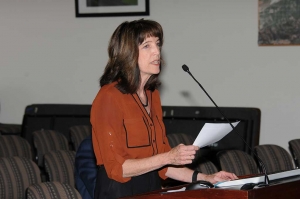|
Chevron remarks on partial NPL deletion for surface soils
By Anonymous — Wednesday, March 15th, 2017
 Leslie Klinchuch Written By Leslie Klinchuch, Chevron Project Manager The PCPL site is now eligible for partial removal from the Superfund list for surface soils because all cleanup actions for soil are completed and validated by the EPA and the State of California, and there is no risk to human health and the environment. Partial removal from Superfund will align the site status with its cleanup progress and further the goal for eventual removal from the Superfund list, formally known as the National Priorities List, after groundwater cleanup is completed. Nearly 400 sites have been cleaned up and removed from the National Priorities List since the program’s inception in 1980. There is strong precedent for partial deletion of surface soils for Superfund sites that also have ongoing groundwater cleanup, because groundwater cleanup typically takes many years. EPA established the Partial Deletion Rule in 1995, to allow portions of Superfund sites that have met cleanup goals to be “delisted”, because they recognize that waiting until the entire site is eligible for delisting can be a barrier to productive uses that benefit communities because of the “stigma” associated with Superfund sites. To put the PCPL site in proper perspective, it’s important to note that the soil conditions at the site never qualified for the National Priorities List. The initial listing of the site in 1989 was based on groundwater only. Also, the initial criteria for Superfund sites set forth by EPA at that time was not as science-based as it became a few years later. If the site had been evaluated under the current criteria, it would not have become a Superfund site because drinking water supplies were never threatened. What would partial Superfund deletion of surface soils mean for the City of Fillmore? Let me start with what it would not mean: 2. Land use restrictions will NOT change, neither by partial deletion now nor with complete deletion from Superfund in the future. Deed restrictions will run with the land. 3. There is no financial gain for Chevron by partial deletion from Superfund. Chevron will pay the required resource cost for the partial deletion process, as well as its ongoing obligations for the PCPL site. Chevron withdrew its own commercial/industrial development plan for the site after the solar energy conditional use permit was approved. Chevron will not receive revenue from the planned solar facility, with the exception of a nominal rent payment from the solar firm that leases the land. And the solar facility will operate for a minimum of 30 years and likely longer. What partial deletion might mean for Fillmore: In closing, the former refinery / PCPL site shares Fillmore’s 100-year history and the community’s rich heritage. The community should be especially proud of the Texaco refinery’s patriotic history during World War II and the contributions that Texaco employees and their families made to Fillmore over the years. But we know that being on the Superfund list is not a source of pride for you. The goal of cleanup is removal from Superfund and the partial deletion for surface soils is an appropriate step at this point in the process. I hope that the Council will agree to support this effort by writing a letter to EPA that we may include with the partial deletion petition. |
